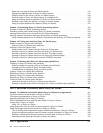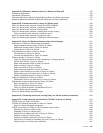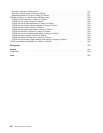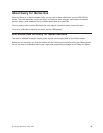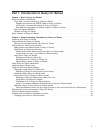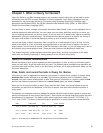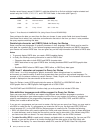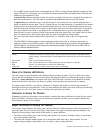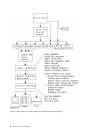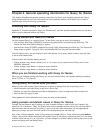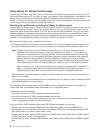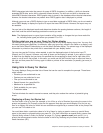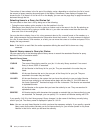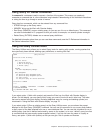
Another record format, named ZIPADDRESS, might be defined for a file that might be location-oriented and
contain only the ZIPCODE, STATE, CITY, and STREETADDR fields, in that order (see Figure 2).
Query retrieves the data you want from the files you choose. It uses certain fields (and record formats)
from those files to select, sort, calculate, and summarize that data in the form you want. It also produces
the query reports containing that data.
Double-byte character set (DBCS) fields in Query for iSeries
Some countries use pictographs or symbolic characters in their language. DBCS fields must be used for
such data. As a general rule, if your national language uses single-byte character set (SBCS) characters,
your files do not contain DBCS data. You can ignore any on-line help information that refers to DBCS data.
Notes:
1. To properly display DBCS data, you need a DBCS-capable display.
2. In Query, the following naming convention is used for DBCS data:
v Character data refers to both SBCS and DBCS character data.
v DBCS data refers to any type of DBCS data, including bracketed-DBCS and DBCS-graphic data
types.
v Bracketed DBCS refers to DBCS-open, DBCS-either, or DBCS-only data types.
UCS2 level 1 character set support in Query for iSeries
UCS2 Level 1 is a 16-bit encoding for graphic characters. When doing business in a worldwide
environment you need the ability to enter and process data from more than one national language. For
example, a list of customer names may contain German, Greek, English, and Thai characters that must be
printed or displayed on the same device at the same time.
Query for iSeries
™
treats UCS2-graphic data the same as GRAPHIC or VARGRAPHIC data. A
UCS2-graphic field is a DBCS-graphic field tagged with a UCS2 CCSID.
The VARCHAR and VARGRAPHIC functions help you write queries that include UCS2 data.
Data definition languages and utilities support in Query for iSeries
Query can query data in files that are created using different data definition languages or products.
Although the description given above applies to all the files on your system, the names or concepts that
might be used depend on the programming language or product (like IDDU, DDS, and DB2 UDB for
iSeries) that is used to define the files.
If you are not a programmer and you want to create a file that you can query from Query, you may want to
use IDDU to create the file. If a programmer can create the file for you, he might use IDDU, DDS and
control language (CL), or the DB2 UDB for iSeries program to create the file. Consider the following:
v IDDU is a menu-driven utility used to define files, fields, and record formats, to store all those definitions
in a data dictionary, and to create the files so they can be used to store data. A file defined using IDDU
can have more than one format. For more information about IDDU, see the IDDU Use book.
v The data file utility (DFU) is used to add, change, and delete data in a database file. You can use DFU
directly, or you can use some of its function through the Enter data option of the IDDU Work with
Database Files display. For more information about DFU, see the ADTS/400: Data File Utility book.
ZIPCODE STATE CITY STREETADDR
67891 OR Mushroom Manor 907 Abbey Hwy
67891 OR St. Paul 19821 Metro Hwy.
67890 OR Piney Island 961 S 19th Ave
Figure 2. Three Records in NAMEADDR File (Using Record Format ZIPADDRESS)
4 Query for iSeries Use V5R2
|
|
|
|
|
|
|
|
|



